‘Tis the season for home improvement projects. Over the next several months, stay tuned for blog posts covering topics you may have questions about related to renovations and home improvement. This week, let’s talk countertops! We’ll cover pros and cons of seven common surfaces: Quartz, Marble, Soapstone, Granite, Concrete, Stainless Steel, and Butcher Block/Wood. Each are beauties in their own right and have varying qualities, durability, and aesthetics. We did our research so you don’t have to in order to make an educated decision about countertops! Read on to learn more.
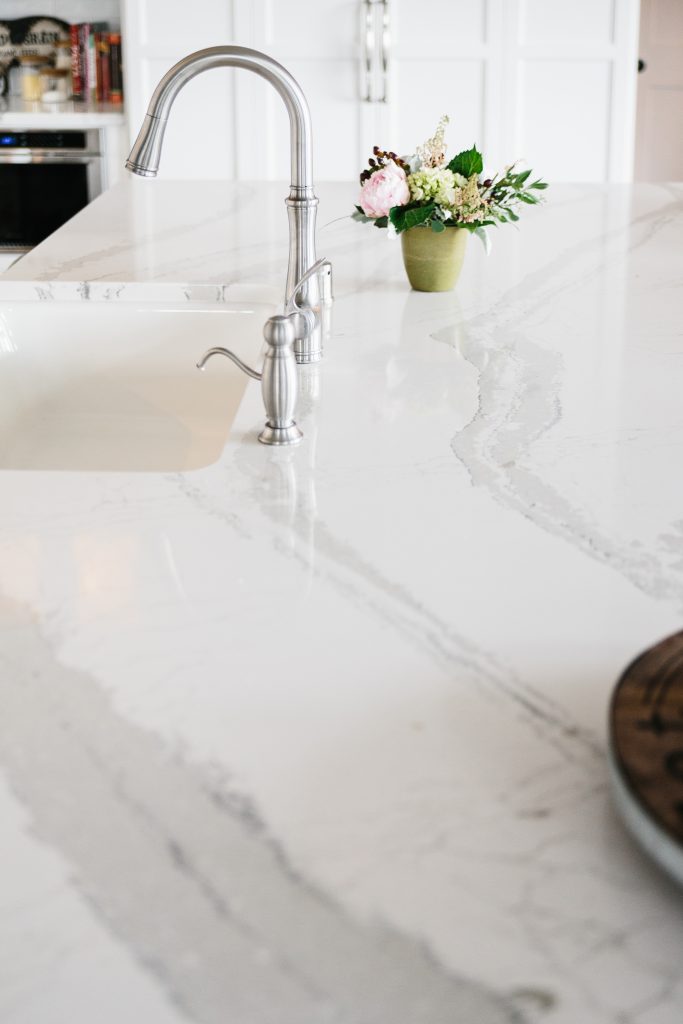
QUARTZ
PROPERTIES:
Quartz is a hard white or colorless mineral which occurs in many environments, and traces of quartz are found in most rocks. It is the most varied mineral and is also the most common, according to minerals.net. Other known varieties of quartz include Amethyst, Citrine and Agate. Its hardness level is a 7 (out of 10) on the Mohs Scale. Colors vary and include colorless, white, purple, pink, brown, black, gray, green, orange, yellow, blue, red, and multi-colored. Quartz has a vitreous luster, meaning it has reflective properties.
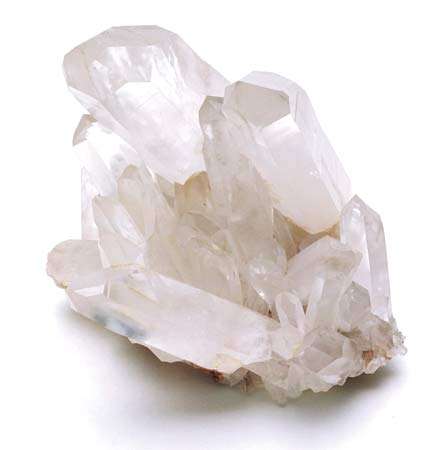

PROS:
Man-made quartz countertops are typically composed of 90% quartz and 10% resins, polymers, and pigments. The 10% binding materials increase durability and decrease chances of cracks or stains. This stone is not easily stained, and is non-porous if sealed properly. Quartz has a beautiful aesthetic and colors vary widely, so you have many options to choose from. Some of our recommended brands for quartz countertops include Cambria, Silestone, and Zodiaq. If you want a clean look that isn’t as busy as granite, quartz is a great option as it can be a solid color, or a more simple pattern with more white. It’s difficult to get much white in granite. The other benefits are that you do not need to seal it, it is resistant to bacteria and easy to maintain. It doesn’t pit, streak or crack as easily as granite. Quartz can often be made in larger slab sizes so you may not need to have seams. It is typically easier to match up patterns at seams than granite is. Several decorative edge profiles are available with quartz as well.
CONS:
Be mindful about the manufacturer you choose for your quartz surface, as some may use a higher percentage of resins, polymers, etc. which can make it look cheap and also decreases durability. Stick to reputable companies and beware of too-good-to-be-true pricing from off-brands that are likely made of inferior materials. Prices of good quality quartz can be high, but are comparable to other surfaces such as granite.

MARBLE
PROPERTIES:
Marble is a metamorphic rock formed from limestone that is subjected to heat and pressure. It is composed of calcite and other clay materials. Its hardness level is 3, which makes it considerably softer than other surfaces. Pure marble is white, but marble exists in a variety of colors. Known to be brittle and gritty, this stone is easily scratched unless treated.
PROS:
Marble has a timeless beauty. It has a sleek, clean look and is a gorgeous option for bathroom or kitchen countertops. Carrara marble is the most common and most affordable marble, comparable to other surface options. Price is an advantage if you go with Carrara.
CONS:
Marble’s hardness level is a 3 out of 10, making it easy for scratching and scuffing up. It also stains very easily if it comes into contact with red wine, oils, or tomato sauce. If you are okay with your surface having a “lived-in” look, marble could be a good fit for you!

SOAPSTONE
PROPERTIES:
Soapstone is a metamorphic rock primarily consisting of talc and other minerals. It is soft, dense, and heat resistant. Colors of this rock vary, and are often gray, bluish, green, or brown. The name is derived from its “soapy” softness and feel. Soapstone is typically gray, bluish, green, or brown in color, often variegated. Its name is derived from its “soapy” feel and softness. Its hardness level is somewhere between a 2.5 and 3.5.
PROS:
Soapstone in its natural form is nonporous, nonabsorbent, and heat resistant. It is easily carved, which means you can customize soapstone surfaces easily. It cannot be stained by many common items found in kitchens, including grapes (this means you can spill your wine!), tomatoes, vinegar, etc. and is heat resistant, so hot pans will not ruin your countertops. Fun fact: soapstone cubes are great for whiskey cubes, just pop them in the freezer and they will keep your whiskey perfectly chilled.
CONS:
Soapstone is easily scratched, however, and imperfections can be fixed with light sanding and mineral oil. Color variability is limited with soapstone, and it is usually dark.
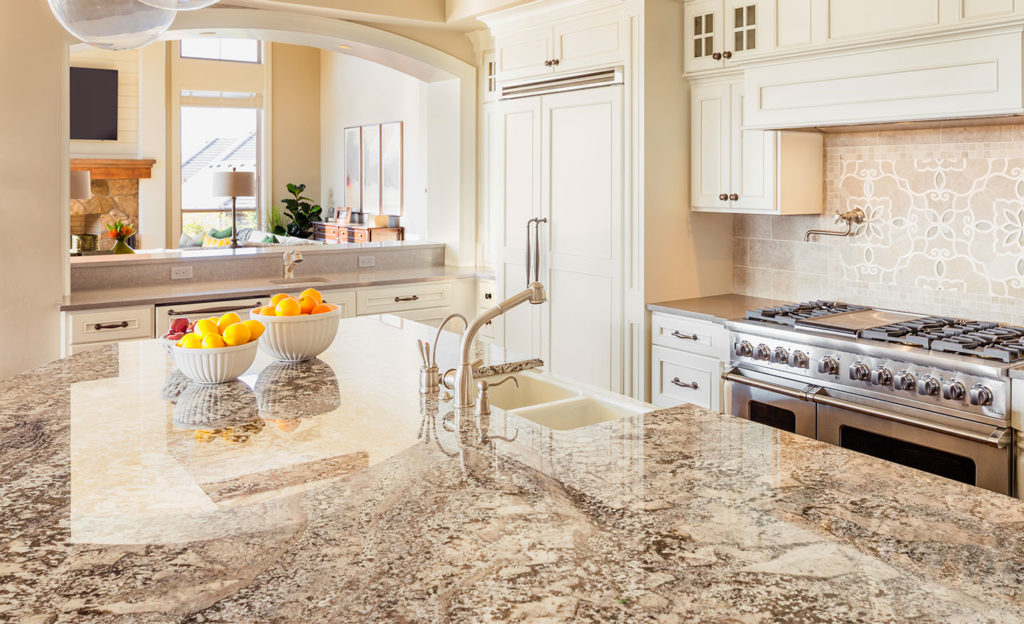
GRANITE
PROPERTIES:
Granite is an igneous rock, which indicates it is formed during the cooling period of molten rock. Given that granite consists of multiple minerals, it provides a wide array of colors, textures, and variance in mineral shapes/sizes. Granite’s range of use is vast, as you can use it for flooring, surfaces, details, steps, buildings, monuments, and natural granite can be seen out in nature, like Mount Rushmore for example. Hardness level on the Mohs scale is a 7.
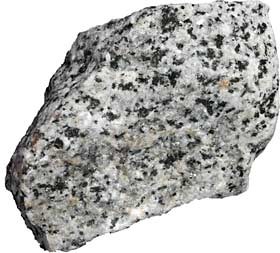
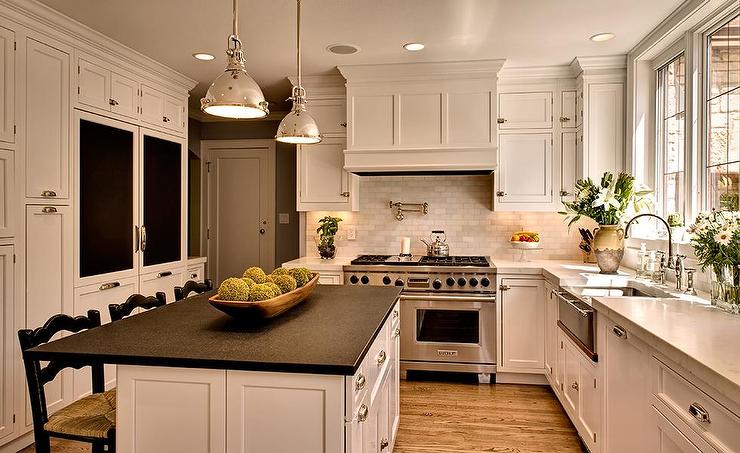
PROS:
Granite has a lot of variability in coloration and size. It is a durable rock, with a hardness level of 7. It is often nonporous if sealed properly and can withstand changes in temperature. Given granite surfaces are not as manipulated as other surfaces, granite has a beautiful, natural look. This stone is heat resistant if sealed. Various finishes are available to create a range of looks; a more matte finish can be achieved with an antique or leather finish.
CONS:
Granite can be very pricey. It also requires maintenance, and you have to reseal it about once per year. It is not considered as bacteria-resistant as quartz or stainless steel and therefore cannot be used in restaurants or some commercial applications.
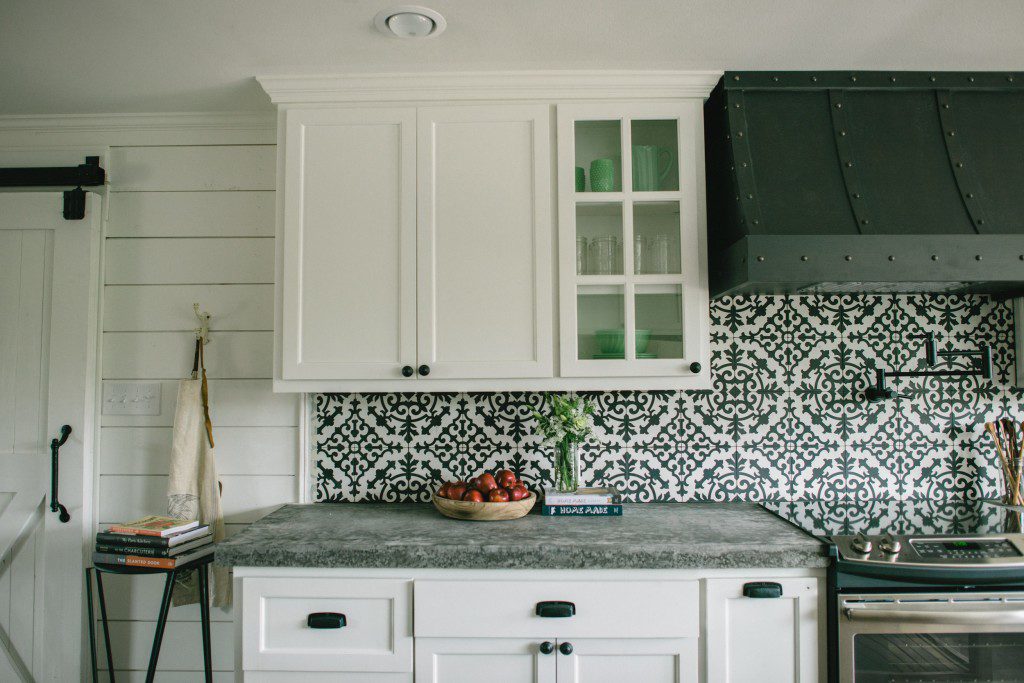
CONCRETE
PROPERTIES:
Concrete is a mixture of roughly 60% aggregates (rocks), 15% cement, 15% water, and 10% air. The longer the concrete is kept moist during production, the stronger and more durable it will become.
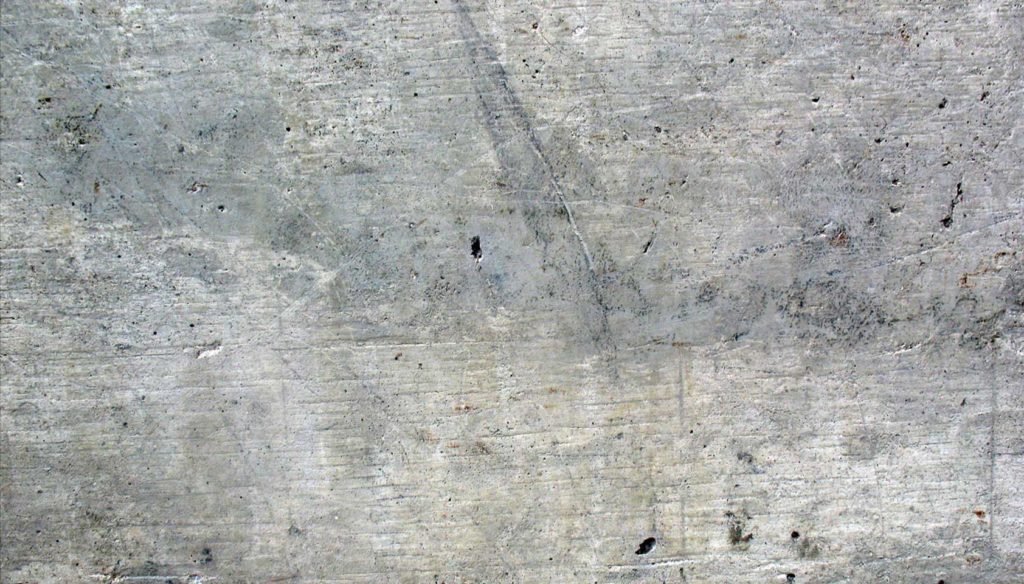
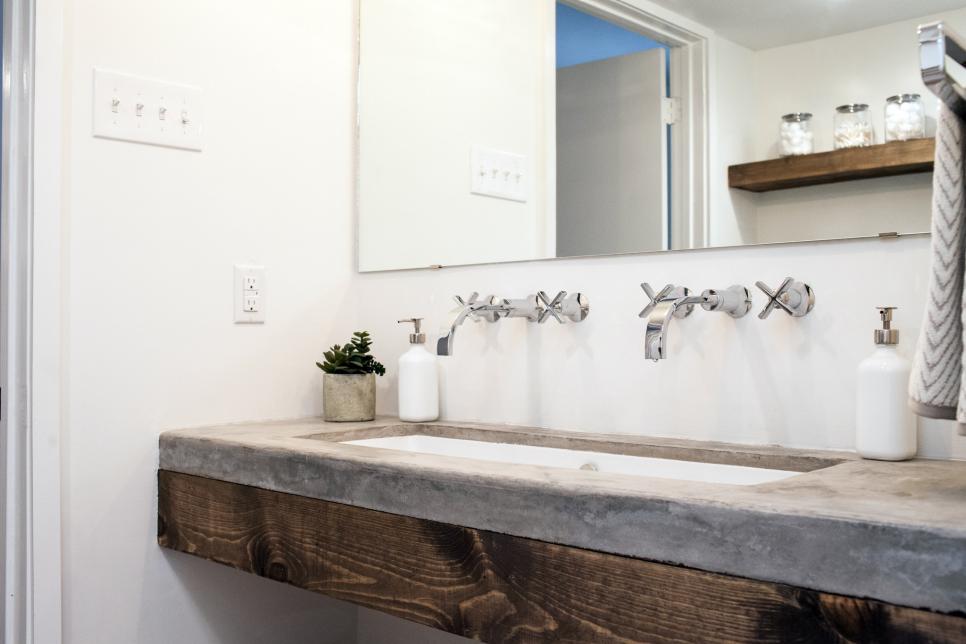
PROS:
Take it from Country Living, concrete is a rock solid choice for a surface (haha!). It is durable and has a sleek look. Concrete is versatile and it could shine anywhere from a farmhouse style home to a modern loft. There are several different color options, and different textures you can play around with as well. Joanna Gaines is a fan and we are, too!
CONS:
Concrete is porous, so it is imperative to seal it regularly. It can crack, stain, and soak up bacteria, oils, etc. It is reasonably priced until you consider the maintenance fees you will need to keep it intact, and the frequent maintenance at that. If you love a rustic, imperfect, and modern look, concrete could be a great option!
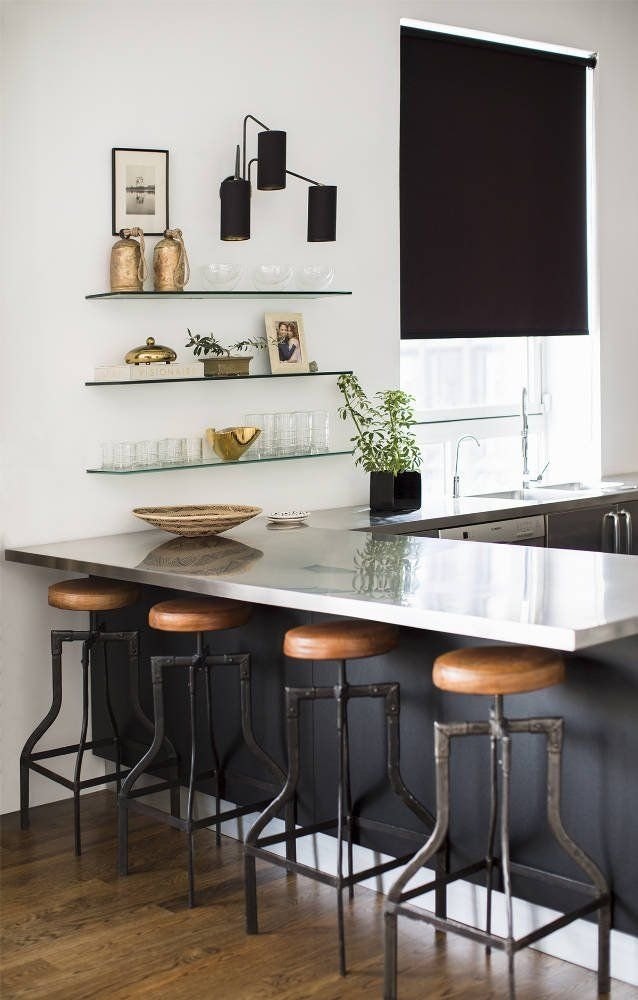
STAINLESS STEEL
PROPERTIES:
Stainless steel is actually made up of a number of steels. When there are high grades of Chromium and Nickel, stainless steels are more resistant to corrosion. Appliance buyers typically love the stainless steel choice, but it can also be fun for surfaces!
PROS:
Stainless steel can be incorporated in a modern space, and can flow seamlessly. It is a durable material, stain-proof, and spill-proof. Stainless steel is also heat resistant and easy to clean. It is the most recommended surface for commercial kitchens because of its ability to be sterilized and easily cleaned to be highly bacteria resistant.
CONS:
If you have stainless steel and children, you know that stainless steel loves to show fingerprints. Choosing this material for a surface may drive you crazy if you consider yourself to be a Type-A clean freak! In addition to fingerprints, this material can get nicked and scratched easily. Stainless steel can also cost you quite a bit.
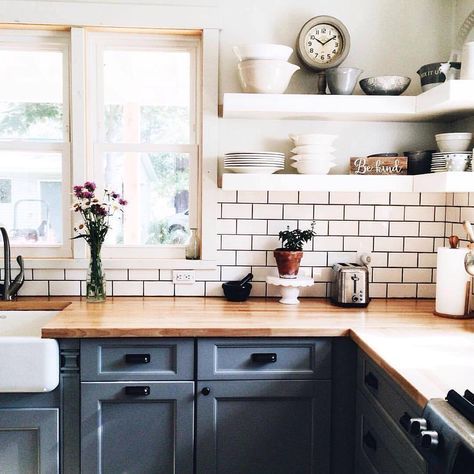
BUTCHER BLOCK/WOOD
PROPERTIES:
Properties vary, just as wood varies. The most commonly used wood for butcher block countertops is maple. Oak, cherry, walnut, and teak are also frequently used. Butcher block is made by combing cuts of wood with glue to create a slab surface. End grain, edge grain, and face grain are three common construction styles of butcher block (See photos below). Edge grain is the least expensive and combines long boards on their sides. Edge grain is the most popular style for butcher block. Face grain uses boards lain flat at their full width, creating a streamlined look as a result. With end grain butcher block, the ends of boards are shown, giving it somewhat of a checkered look.
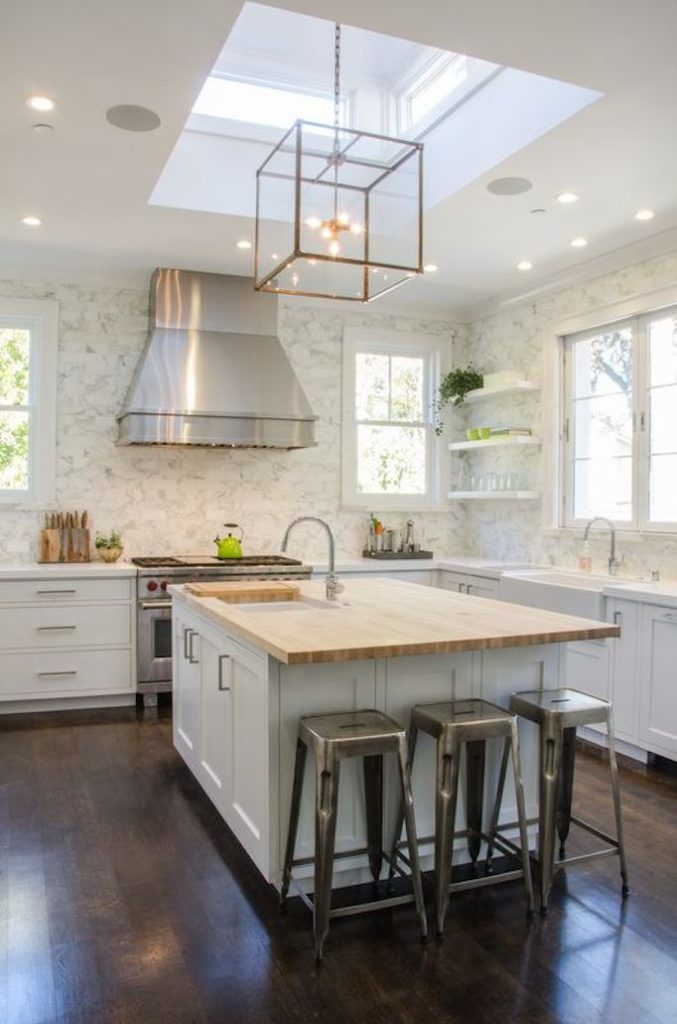
PROS:
Butcher block is called butcher block for a reason – it’s great for chopping (as butchers do), and it adds rustic charm to a space. It is a durable, long-lasting option and wood grains tend to go well with other kitchen materials such as tile and stainless steel, for example. You don’t have to worry about shattering your fancy china dishes on butcher block since it is a softer material. This option can be very cost effective, and can be a DIY project – only if you are meticulous and patient!
CONS:
Butcher block maintenance includes oiling every 6 months or so, which can be tedious. Wood surfaces are easily damaged and stained, and will discolor if around a sink. These counter tops can also warp or crack from moisture if not treated/sealed properly. Also, keep in mind that butcher block is not very heat resistant and can burn or scorch easily.
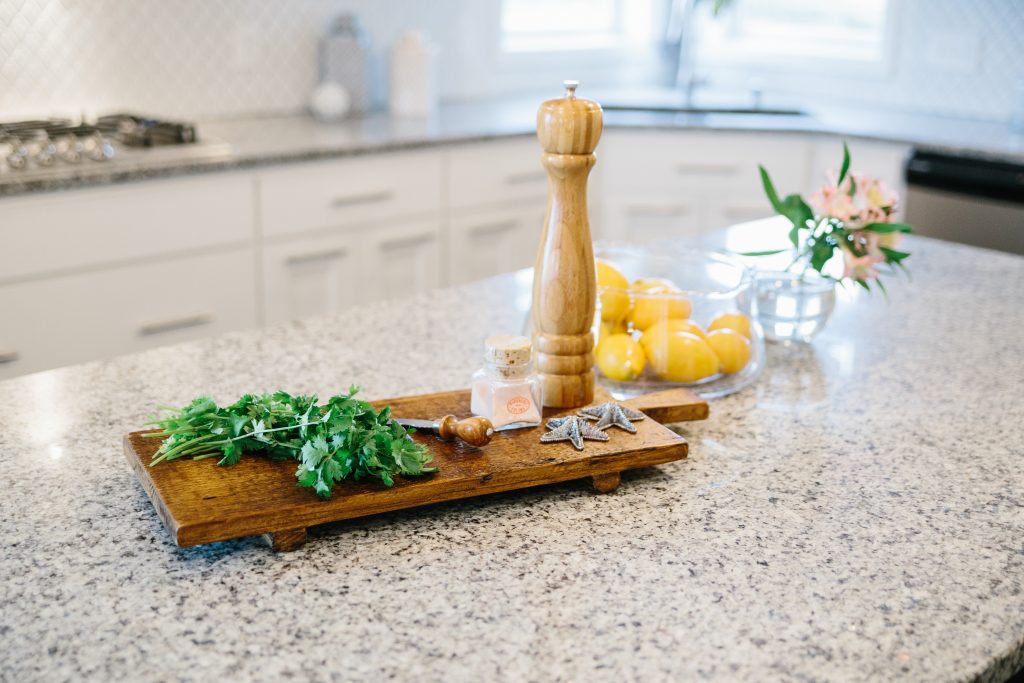
Sources used for this post include: forbes.com, minerals.net, geology.com, apartmenttherapy.com, thekitchn.com, remodelista.com, cement.org, and countryliving.com.
We hope you found this post to be informative. We have endless selections for countertops available at Interior Impressions and would be happy to help you with any upcoming projects – feel free to reach out 🙂
XO,
Amy
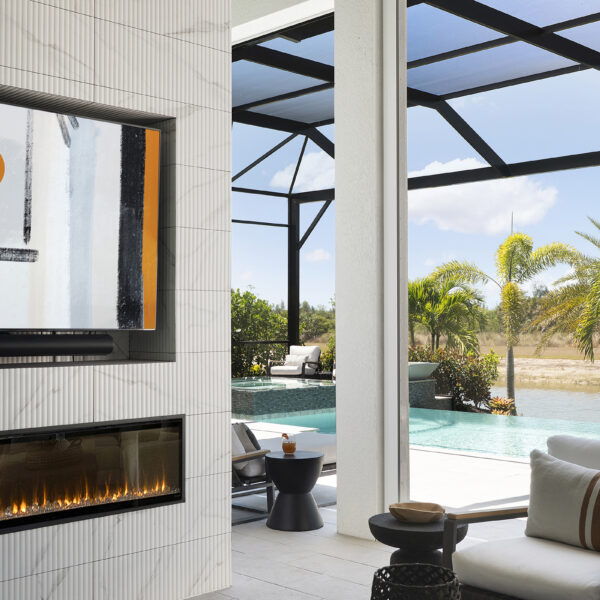
I like how you talked about the natural and beautiful look that granite countertops have. This definitely sounds like something that could help my kitchen shape up to be the calming place for people to eat in that I’ve always wanted it to be. I’ll go look for a kitchen countertop provider in the area right away so I can get some granite from them.